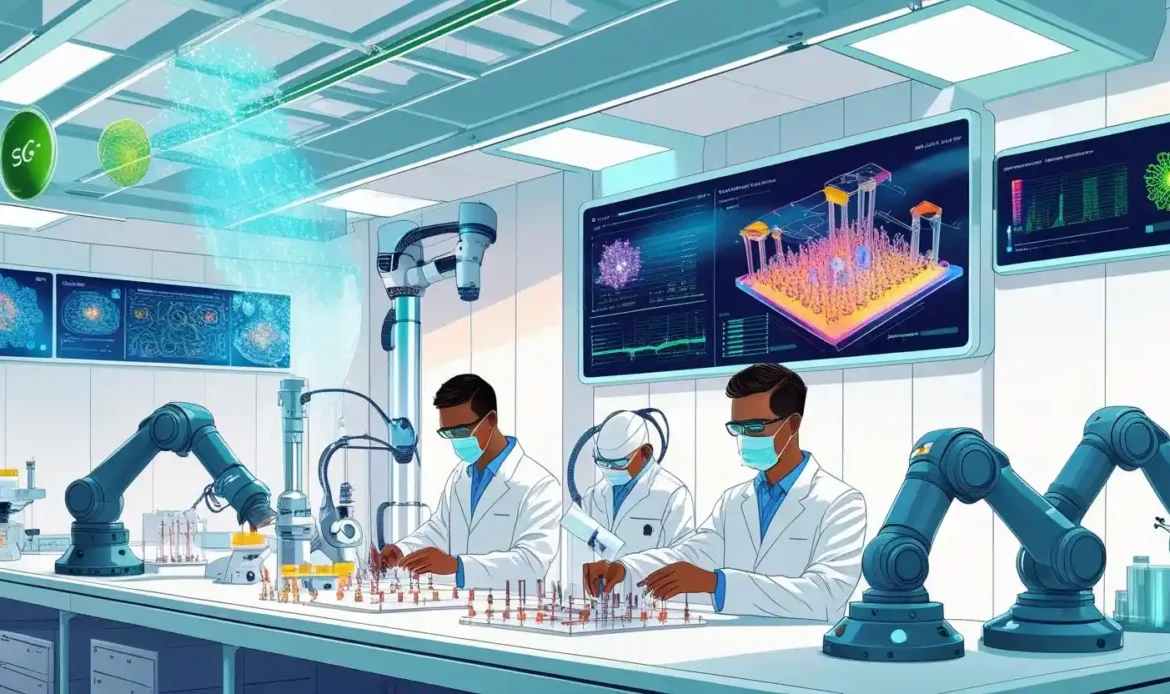As #Nanotechnology continues to change the world, its role in Sensor Technology is becoming even more important. Sensors that use nanotechnology are not just smaller—they are smarter, faster, and more accurate than ever before. They can detect extremely small changes in the environment, making them useful in healthcare, transportation, aerospace, and many other industries. This is creating smarter systems that can improve our daily lives in ways we couldn’t imagine a few years ago.
Introduction
Nanotechnology Sensors use Nano materials to measure physical, chemical, or biological changes with unmatched precision. Because materials behave differently at the nanoscale, they offer advantages like larger surface area, higher reactivity, and even quantum effects. These special properties are helping industries create new sensors that can handle complex tasks—from tracking environmental pollution to monitoring human health in real-time.
Right now, we are in the middle of a big shift in sensor technology. This is not just a small upgrade—it’s a complete transformation in how we measure, detect, and understand the world around us.
Role of Nanotechnology in Sensor Innovation
When Nanotechnology is combined with #AI and #MachineLearning, the results are game-changing. AI can process huge amounts of data from sensors instantly, improving accuracy and predictive power. This means sensors can learn from data, make better decisions, and adjust in real-time.
For example, in Environmental Monitoring, a nano-sensor connected to AI could detect air quality changes immediately and predict future pollution patterns. In #Healthcare, AI-powered nano-sensors could track patient health 24/7 and alert doctors before a problem becomes serious.
Another important development is the use of Simulation and Modeling in designing these sensors. With advanced simulations, scientists can predict how a nano-sensor will work in different environments without having to test each one physically. This speeds up innovation and helps create next-generation sensors that can adapt to changing conditions automatically.
Emerging Trends in Nanotechnology Sensor Applications
One of the most exciting areas for Nanotechnology Sensors is Healthcare Innovation. These tiny devices are making a big impact in:
- Diagnostics: Detecting diseases like cancer or diabetes much earlier by identifying specific biomarkers at very low levels.
- Drug Delivery: Delivering medicines directly to the affected area, reducing side effects and improving treatment results.
- Patient Monitoring: Tracking vital signs in real-time for better medical decision-making.
For example, a nanosensor can identify a single drop of a disease marker in the bloodstream—something that was impossible for traditional sensors. This means patients can start treatment earlier, often leading to better outcomes.
But healthcare is not the only sector benefiting. These sensors are also transforming:
- Automotive: Improving vehicle safety with better collision detection and environmental monitoring for smarter driving.
- Aerospace: Enhancing navigation systems and monitoring aircraft structure health to prevent accidents.
- Consumer Electronics: Powering smaller, more energy-efficient devices.
The market for nanotechnology-based sensors is growing rapidly. As companies invest more in research, the focus is shifting toward sustainability—creating sensors that work efficiently without harming the environment.
Challenges and Risk Assessment in Nanotechnology Sensors
Even though Nanotechnology Sensors bring many benefits, they also have challenges. One major concern is #RiskAssessment. Because new materials and designs are developing so quickly, it’s important to understand their health, safety, and environmental impact.
Regulations are also important. To gain public trust, companies must follow strict safety standards and ensure their products are reliable. Without this, even the most advanced sensor may fail to gain acceptance.
Another big challenge is Intellectual Property (IP). With so much innovation happening, protecting unique designs and ideas is essential. Companies that fail to secure their IP could lose their competitive edge. In the fast-moving nanotechnology market, IP protection can decide who leads and who falls behind.
Strategic Importance and Future Outlook
Sustainability is shaping the future of nanotechnology sensors. The world needs solutions that reduce environmental impact, and these sensors can help in many ways:
- Air Quality Monitoring: Providing real-time data to improve urban air health.
- Sustainable Agriculture: Helping farmers use water and fertilizer more efficiently, reducing waste.
- Energy Efficiency: Monitoring systems to cut down energy loss in factories or homes.
For businesses, investing in Nanotechnology Sensors is not just about profit—it’s also about building a future-proof strategy that aligns with environmental responsibility.
However, to fully take advantage of these opportunities, companies need strong leadership. Finding the right executives who understand both technology and business strategy is crucial. This is where #ExecutiveSearch firms like Brightpath Associates come in. With over 50 years of combined experience, Brightpath connects companies with leaders who can drive innovation in the nanotechnology space. By hiring the right leadership, businesses can stay ahead in this competitive and fast-changing market.
Conclusion
Nanotechnology Sensors are transforming industries—from healthcare and transportation to aerospace and agriculture. Their ability to deliver real-time, highly accurate data makes them one of the most promising technologies for the future. With AI, machine learning, and sustainability goals driving further innovation, these sensors will only become more advanced and more essential.
For business leaders, the key is to act now—invest in research, build strong teams, and protect intellectual property. By working with experts in #ExecutiveSearch and strategic recruitment, companies can ensure they have the right people in place to lead the next wave of nanotechnology innovation.
The future is bright for those ready to embrace these changes. As technology keeps evolving, nanotechnology sensors will continue to open doors to smarter, safer, and more sustainable solutions.
Find your next leadership role in Nanotechnology Industry today!
Stay informed with the latest insights on Nanotechnology Industry!

